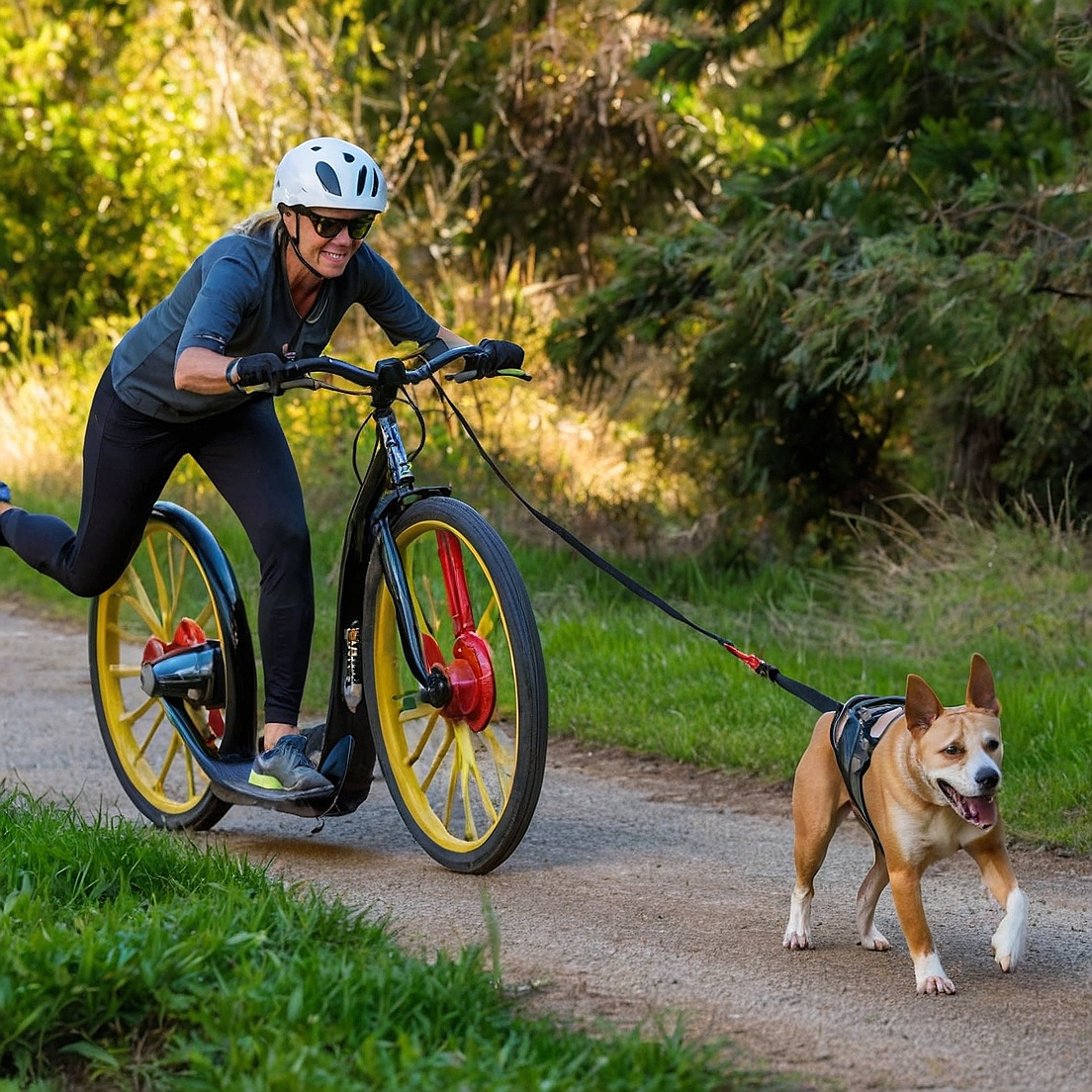Dog scootering is a fun and exciting activity that allows dogs to run and play while their owners ride alongside them on a scooter. However, before you can start enjoying this activity with your dog, you need to train them to pull you safely and efficiently. Training a dog for dog scootering requires patience, consistency, and positive reinforcement. In this article, we will explore the steps you need to take to train your dog for dog scootering.
Introduction to Dog Scootering
Dog scootering is a great way to provide your dog with exercise and mental stimulation. It’s also a fun way to spend time with your dog and strengthen your bond. However, it’s essential to start with the basics and ensure that your dog is comfortable and confident in their role as a scooter-pulling dog. This means introducing them to the scooter, harness, and other equipment gradually and positively.
Choosing the Right Equipment
Before you start training your dog, you need to choose the right equipment. This includes a dog scooter, a harness, and a leash. The scooter should be sturdy and have good brakes, and the harness should be comfortable and well-fitting. The leash should be long enough to allow your dog to run freely, but not so long that it gets tangled or caught in the wheels of the scooter. Here are some things to consider when choosing equipment:
- A sturdy scooter with good brakes
- A comfortable and well-fitting harness
- A long leash that allows your dog to run freely
- A helmet and other safety gear for the rider
- A first aid kit and other emergency supplies
Getting Started with Training
Once you have the right equipment, you can start training your dog. The first step is to introduce your dog to the scooter and harness. Let them sniff and explore the equipment, and reward them with treats and praise for their calm behavior. Next, put the harness on your dog and let them get used to wearing it. Start with short sessions and gradually increase the duration as your dog becomes more comfortable.
Teaching Your Dog to Pull
Once your dog is comfortable with the harness and scooter, you can start teaching them to pull. Begin by having your dog walk beside you while you hold the leash. As you walk, encourage your dog to pull gently on the leash by saying “pull” or “go” and rewarding them with treats and praise. Gradually increase the distance and speed of your walks, and introduce obstacles such as hills and turns.
Introducing the Scooter
Once your dog is comfortable pulling, you can introduce the scooter. Start by having your dog pull you on the scooter at a slow pace, and gradually increase the speed as they become more confident. Make sure to praise and reward your dog for their efforts, and take regular breaks to give them a chance to rest and recover.
Advanced Training
As your dog becomes more experienced, you can start to introduce more advanced training techniques. This might include teaching your dog to respond to commands such as “stop” and “turn,” and to navigate more challenging terrain such as trails and hills. You can also start to introduce other dogs and distractions, and teach your dog to remain focused and calm in the presence of these distractions.
Tips and Tricks
Here are some tips and tricks to keep in mind when training your dog for dog scootering:
- Start with short sessions and gradually increase the duration as your dog becomes more comfortable
- Use positive reinforcement such as treats and praise to encourage good behavior
- Be consistent and patient, and avoid pushing your dog too hard
- Make sure to give your dog regular breaks to rest and recover
- Consider working with a professional dog trainer or instructor for personalized guidance and support
Conclusion
Training a dog for dog scootering requires patience, consistency, and positive reinforcement. By following the steps outlined in this article, you can help your dog become a confident and capable scooter-pulling dog. Remember to start with the basics, introduce equipment and training gradually, and always prioritize your dog’s safety and well-being. With time and practice, you and your dog can enjoy the many benefits of dog scootering, including exercise, mental stimulation, and a stronger bond between you and your dog.
